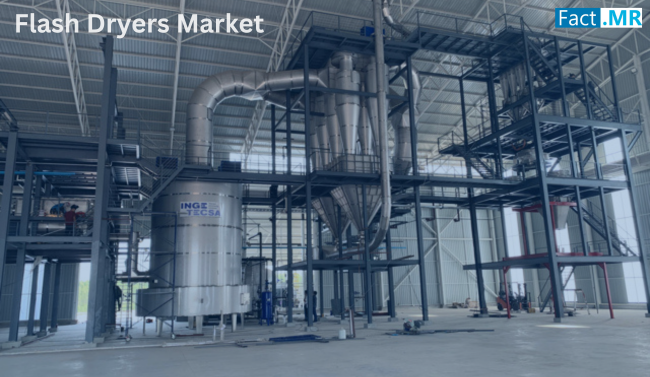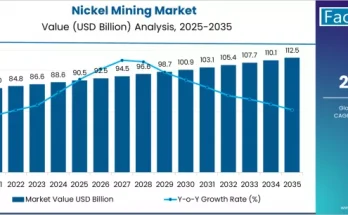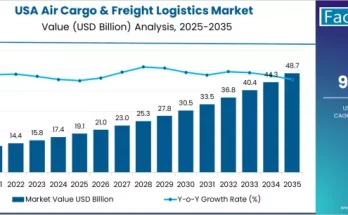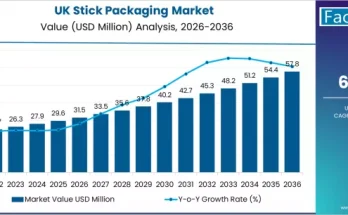Flash drying is a high‑speed technique used to remove moisture from materials by exposing them to a stream of hot air. Its rapid thermal transfer makes it ideal for heat‑sensitive powders and granules. As manufacturers across food, chemical, pharmaceutical, polymer, and mineral sectors seek faster, more efficient, and energy‑smart processes, flash dryers have moved from niche asset to strategic core equipment.
Based on market intelligence, the global flash dryers landscape is gaining momentum thanks to their compact footprint, energy efficiency, and ability to preserve delicate material properties. The industry’s competitive dynamics — including technological innovation, regional demand variation, and barriers to adoption — make this a compelling growth sector.
Market Overview & Key Drivers
- Energy‑efficient drying for heat‑sensitive materials
Traditional industrial dryers often take longer and risk damage or discoloration to moisture‑sensitive ingredients. In contrast, flash dryers offer ultra‑rapid drying that preserves quality—especially critical in food, pharmaceuticals, and specialty chemicals. Their efficient heat transfer also supports cost savings and reduced energy footprints. - Surge in processed foods & powdered ingredients
Manufacturers of starches, spices, convenience foods, and nutritional powders favor flash dryers for their ability to enhance shelf life without compromising flavor or texture—a trend that boosts demand in the food processing segment. - Pharmaceutical precision & regulatory compliance
Stringent hygiene standards demand controlled, contamination‑free drying. Flash dryers offer precise moisture control and are easily cleaned, enhancing suitability for active pharmaceutical ingredients (APIs) and dry formulations . - Expansion in chemical, mineral, and biomass processing
From catalysts and pigments to renewable biomass and minerals, flash dryers are increasingly valuable due to their speed and adaptability. They also support emerging industries like biofuels and agricultural waste treatment.
Market Size & Forecast Dynamics
Projected growth trajectories highlight a steady expansion:
- Historical growth has been moderate, reflecting a CAGR just under 2%, recovering post-pandemic.
- Forecasts point to renewed momentum, with a mid-term uptick and long-term acceleration toward more energy-smart and modular systems .
Growth Phases:
- Short term: steady growth driven by food and pharmaceutical sectors.
- Mid term: adoption of modular, connected systems with heat recovery.
- Long term: focus on sustainability—zero‑emission units and renewable-powered designs.
Segmentation Insights
By Size
- Medium‑size flash dryers dominate due to versatility: suitable for SMEs and large plants alike, leading the pack in sales share and sustained demand.
- Small units cater to cost‑conscious startups; large units serve high‑volume operations.
By Operating Principle
- Direct‑drying units expose materials directly to heated gas, offering quick moisture removal.
- Indirect‑drying variants circulate heated air separately for sensitive materials—important where purity is critical.
By Application
- Food processing leads with a growing share, benefiting from flash dryers’ ability to enhance shelf life and maintain product quality.
- Chemicals and pharmaceuticals follow closely, relying on precision drying for complex materials. Other applications include minerals, polymers, fertilizers, agricultural products, and more.
Regional Landscape
North America (especially the U.S.)
- Markets prioritized for tech adoption, automated control, and IoT integration.
- Regulatory drivers (e.g., NFPA, OSHA, EPA) push safety and efficiency in manufacturing—using flash dryers for compliance and optimization.
Europe
- Follows suit, particularly under data protection, product safety, and emissions legislation.
Asia-Pacific (led by China & India)
- Rapid industrialization in food processing, pharma, and chemicals fuels demand.
- China alone accounts for roughly 38% of East Asian market share.
Other Regions
- Latin America, Middle East & Africa show slower uptake but potential growth, especially as industrial infrastructure evolves.
Market Drivers & Restraints
Pro-growth factors
- Demand for fast, quality-preserving drying particularly in processed foods and fine chemicals.
- Advances in automation and connectivity (IoT real-time monitoring, predictive maintenance).
- Emerging sustainability trends encouraging renewable energy integration and zero-emission systems.
Challenges
- High initial investment, especially with automation, training, and maintenance—making SMEs hesitant.
- Competition from alternative technologies like spray dryers or fluidized-bed systems.
- Regulatory and environmental constraints on fossil-fuel-based drying increase complexity and cost.
Competitive Landscape & Innovation
Key global players include:
- ANDRITZ AG, Carrier Vibrating Equipment, Dedert (ANDRITZ), Fanqun Drying, GEA Group, Hosokowa Micron, SPX Flow, ThyssenKrupp, FLSmidth, and others.
Market strategies:
- Collaboration, acquisitions, and product innovation aimed at efficiency and digital capabilities. Examples include ANDRITZ’s acquisition of Kempulp, FLSmidth’s mining venture, and GEA’s digitization push
Product customization is trending—configurable units with feed bins, lump breakers, and mixer paddles tailored to specific industrial needs.
Smart integration: IoT-enabled sensors and heat‑recovery systems are becoming mainstream, optimizing uptime and reducing energy use.
Future Outlook & Opportunities
Sustainability & green initiatives
Expect deeper uptake of renewable energy–driven dryers, coupled with heat recovery and emission reduction, especially as environmental policies tighten.
Modularity & digitalization
Flexible, plug-and-play units with remote monitoring and predictive analytics will appeal to agile manufacturers, particularly SMEs.
Broader application
New use cases in textiles, biomass, specialty chemicals, and waste-to-energy sectors point to untapped opportunities.
Geographic expansion
Expanding deployment in Latin America, Africa, and Southeast Asia as these regions advance their industrial bases.
Conclusion
The flash dryers market is entering an era of sustainable growth—yndriven by evolving industrial demands, regulatory landscapes, and digital transformation. As manufacturers prioritize faster, eco-friendlier, and precision-driven drying processes, flash dryers stand as pivotal enablers.
Stakeholders who invest in modular designs, energy-efficient systems, digital connectivity, and regional foresight can unlock strategic value. By focusing on customization, sustainability, and automation, they can stay ahead in an increasingly competitive and evolving market.



